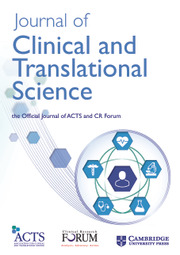No CrossRef data available.
Article contents
290 Hepatomegaly and fatty liver infiltration among unhealthy weight pediatric population in Puerto Rico
Published online by Cambridge University Press: 24 April 2023
Abstract
OBJECTIVES/GOALS: A quarter of Puerto Rican pediatric population are overweight or obese. Pediatric obesity is established as a global public health concern that will develop liver complication as a Non-alcoholic fatty liver disease (NAFLD). This study aims to determine the association between body weight, liver size and texture in Puerto Rican pediatric population. METHODS/STUDY POPULATION: Twenty-nine (n=29) pediatric participants (20 unhealthy weight and 9 healthy weight) between 7 to 19 years underwent panoramic ultrasound imaging of the RLL. Craniocaudal RLL measurement and liver texture were evaluated. Body mass index and waist circumference were also compared. Shapiro-Wilk test and students t-tests were attained with significance at p < 0.05. RESULTS/ANTICIPATED RESULTS: Statistical differences were detected between healthy weight and unhealthy weight pediatric patients: (1) RLL craniocaudal diameter (p=0.006); (2) waist circumference (p < 0.001); (3) BMI (p < 0.001). Unhealthy weight (overweight and obese) pediatric patients presented a greater number of livers with fat infiltration (13) and hepatomegaly (15). DISCUSSION/SIGNIFICANCE: This preliminary results showed that liver size was larger and fatty infiltration are relatively frequent among overweight and obese pediatric patients. Prevention of unhealthy weight and the diagnosis of changes in liver texture and size among pediatric patients is important to prevent progressing of liver disease and avoid irreversible damage.
- Type
- Precision Medicine/Health
- Information
- Creative Commons
- This is an Open Access article, distributed under the terms of the Creative Commons Attribution-NonCommercial-NoDerivatives licence (https://creativecommons.org/licenses/by-nc-nd/4.0/), which permits non-commercial re-use, distribution, and reproduction in any medium, provided the original work is unaltered and is properly cited. The written permission of Cambridge University Press must be obtained for commercial re-use or in order to create a derivative work.
- Copyright
- © The Author(s), 2023. The Association for Clinical and Translational Science


